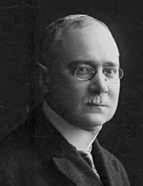

These are academic opinions, such as those he wrote about the admission of Fortunato de Almeida and Martinho da Fonseca to the Academia das Ciências in 1917 and 1921; library catalogues, such as those of the Viscount of Santarém (1913), Pedro de Azevedo (1919) , and Jaime Moniz (1922); and the historical eulogy of his predecessor in the chair of full member of the Academia das Ciências, Braamcamp Freire himself (1925). Finally, the profile and work of various custodians and historians at the Torre do Tombo: those of Damião de Góis, Manuel da Maia, the Viscount of Santarém, Cardinal Saraiva, Herculano, Varnhagen and Gama Barros, works that extend chronologically from 1909 to 1949 and highlight the commitment of these figures to the preservation of documents and to historical studies.
We can thus have a glimpse of the experience and profound dedication to academic life and research of António Baião to the extent that Raúl Rego said of him in 1967 that ‘for the people of the 20 th century, the National Archive is António Baião’ and that at the Torre do Tombo and the two academies he headed , he was always guided by ‘calm direction, serene action’ (‘O Dr . António Baião’, ibidem, p. IV ) .
It is also in the dense catalogue of his library, made up of almost 3,300 items (unfortunately dispersed in a public sale), that we can see Baião ’ s complex world of intellectual interests and academic social life, for whom erudition, palaeography, diplomacy and Portuguese sources seem to have known no secrets.
He could more appropriately be called a researcher than a historian – perhaps following in the footsteps of one of his masters, Braamcamp Freire, who refused the latter designation. António Baião located, ordered, published and compared texts and editions rather than elaborating concepts and outlining interpretations of facts in the light of historical science. In him, the documentalist, the scholar and the archivist rarely dared to innovate, to seek to summarise the facts and subsequent readings of them. This would be the work of others at a later date , using different tools and scientific purposes.
This work is financed by national funds through FCT - Foundation for Science and Technology, I.P, in the scope of the projects UIDB/04311/2020 and UIDP/04311/2020.
